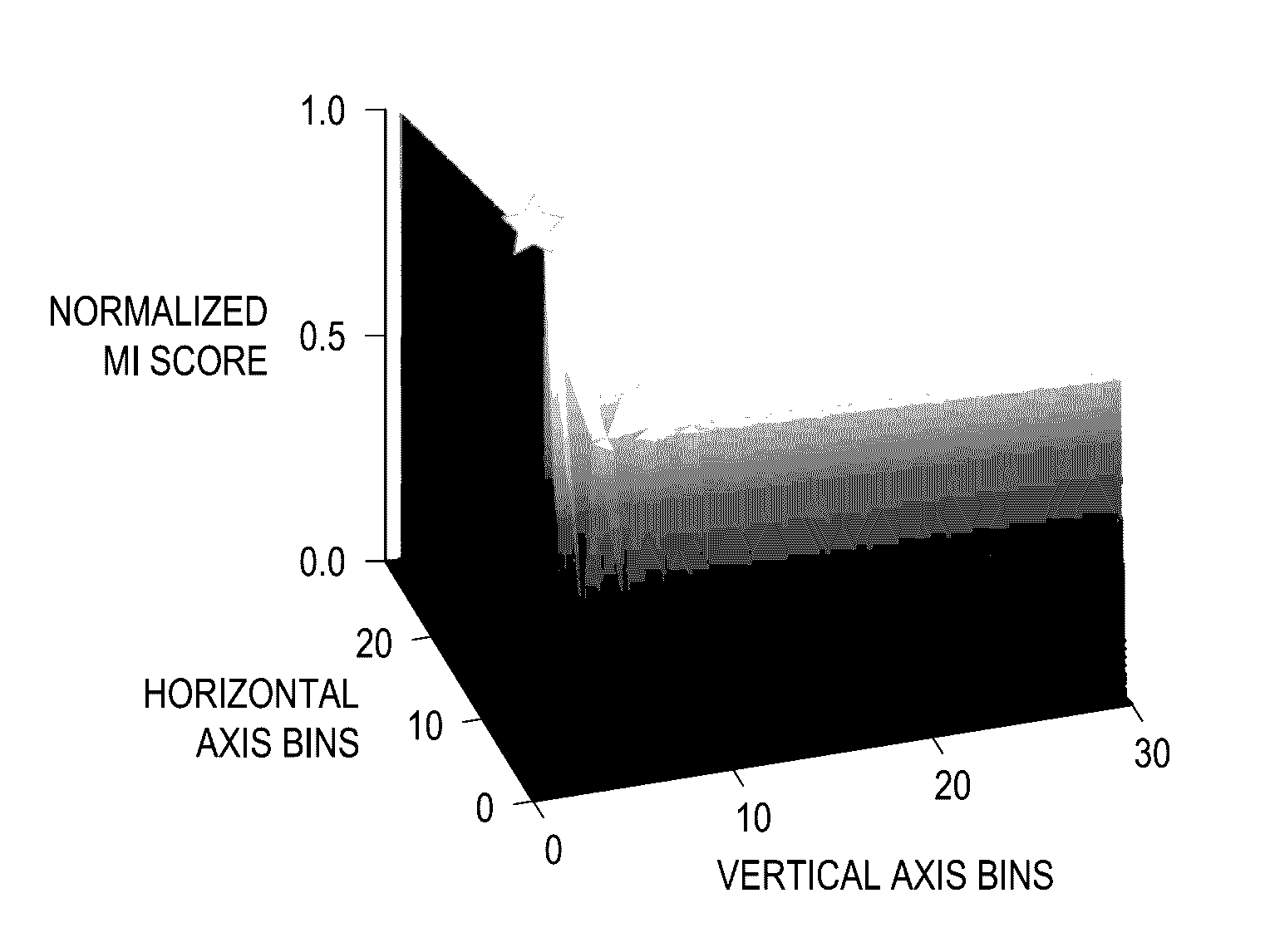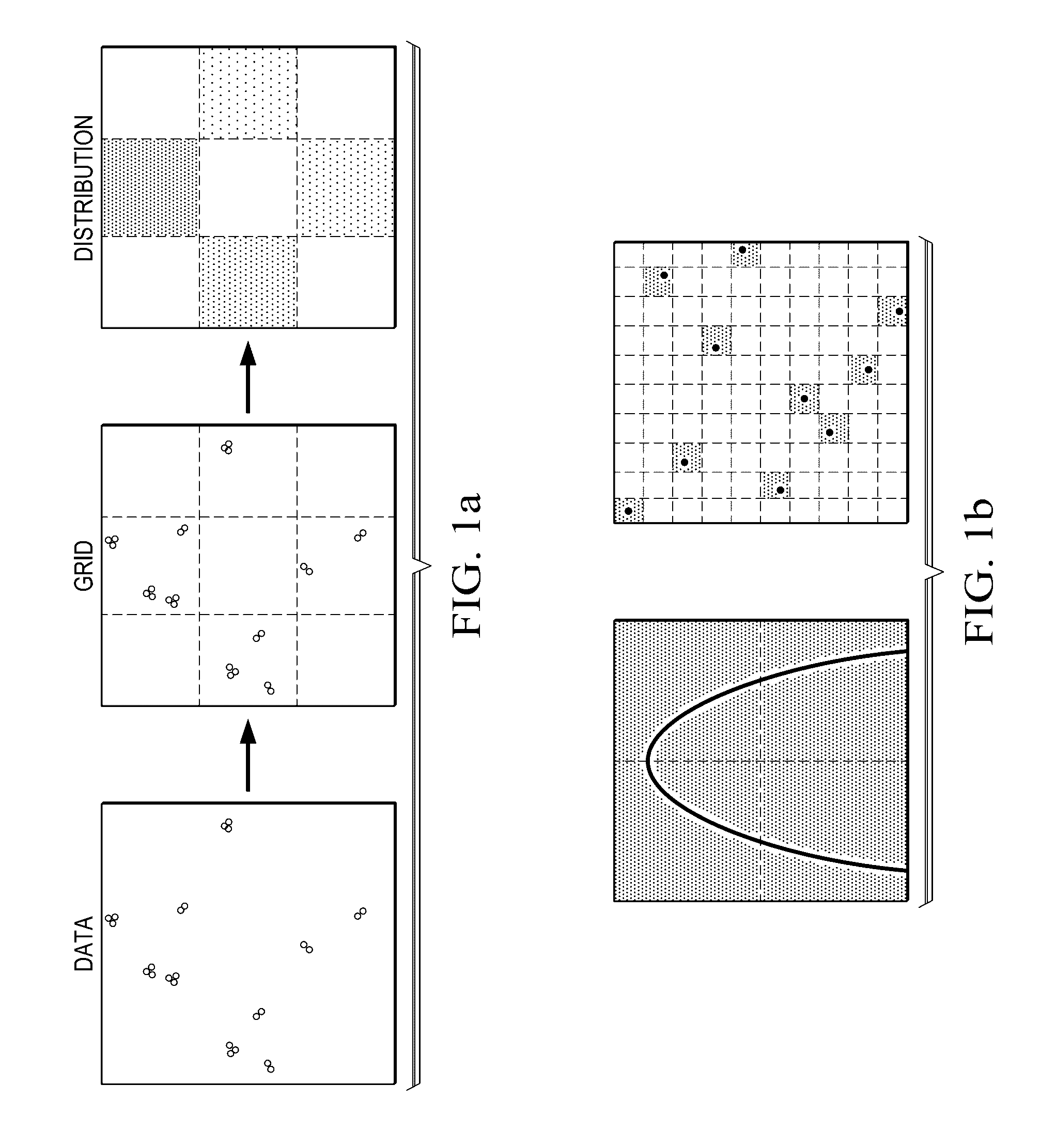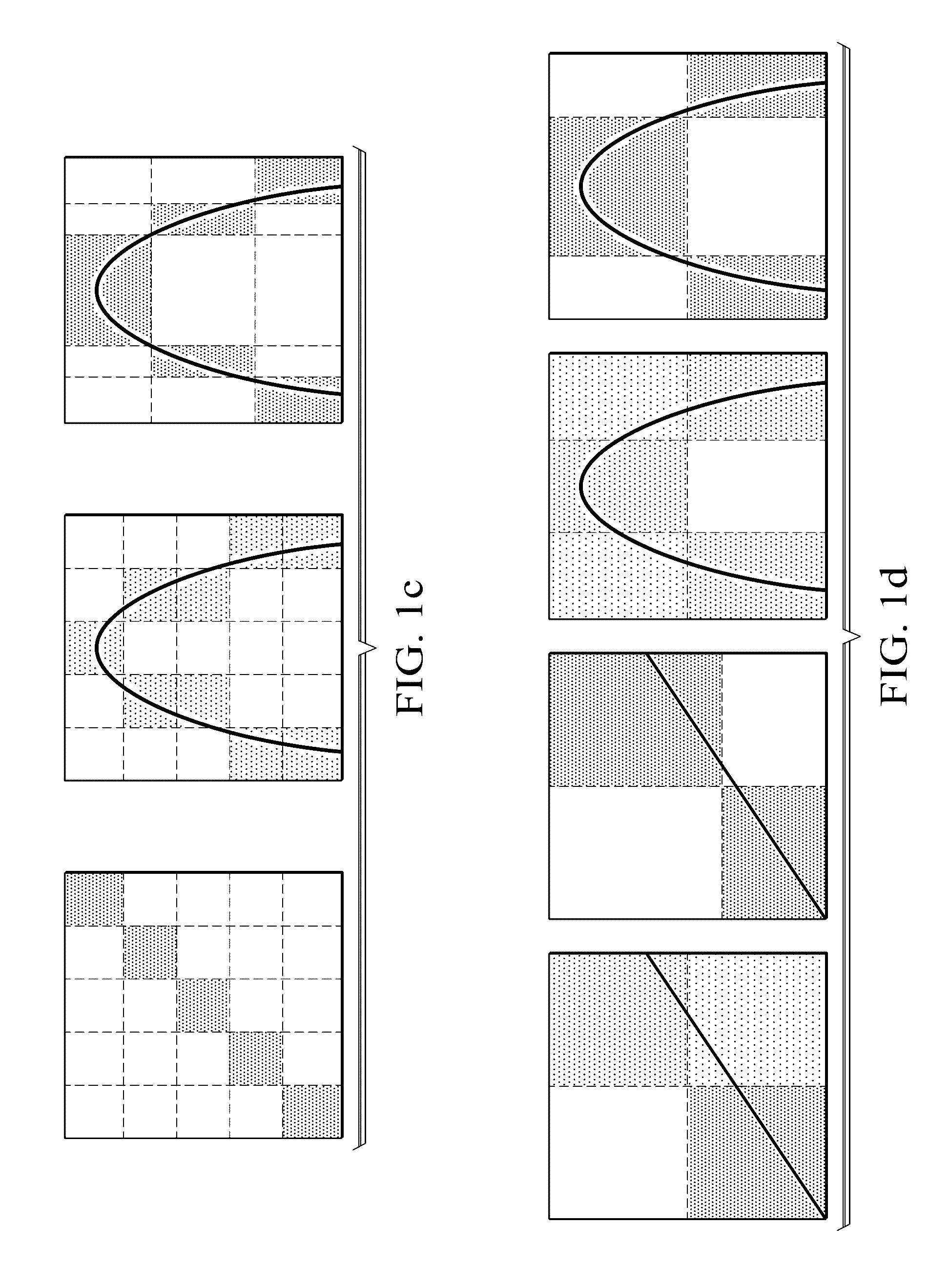Identifying associations in data and performing data analysis using a normalized highest mutual information score
a technology of association and data, applied in the field of association identification in large data sets, can solve the problems of artificially high mutual information scores, affecting the resultant scores, and fraser-swinney algorithm does not provide a significant improvement over either method, and achieve the effect of facilitating data analysis
- Summary
- Abstract
- Description
- Claims
- Application Information
AI Technical Summary
Benefits of technology
Problems solved by technology
Method used
Image
Examples
Embodiment Construction
Introduction
[0032]With an explosion of data in many fields, the challenge of identifying meaningful relationships between variables in large datasets is increasingly important. Furthermore, even the lesser goal of identifying pairwise relationships is a formidable one that is the subject of considerable exploration. This task is further complicated when different pairs of variables are related in different ways (e.g. linearly, exponentially, periodically, or even non-functionally).
[0033]One way to start exploring a large dataset is to search for the most closely associated pairs of variables in it. To do so we would ideally calculate some measure of relatedness for each pairwise relationship, rank the pairs by their scores, and then examine the relationships at the top of the list. For this approach to work effectively, the statistic we use should have two heuristic properties. First, we want to capture any interesting relationship, not just relationships of certain types, so the st...
PUM
 Login to View More
Login to View More Abstract
Description
Claims
Application Information
 Login to View More
Login to View More - R&D
- Intellectual Property
- Life Sciences
- Materials
- Tech Scout
- Unparalleled Data Quality
- Higher Quality Content
- 60% Fewer Hallucinations
Browse by: Latest US Patents, China's latest patents, Technical Efficacy Thesaurus, Application Domain, Technology Topic, Popular Technical Reports.
© 2025 PatSnap. All rights reserved.Legal|Privacy policy|Modern Slavery Act Transparency Statement|Sitemap|About US| Contact US: help@patsnap.com



